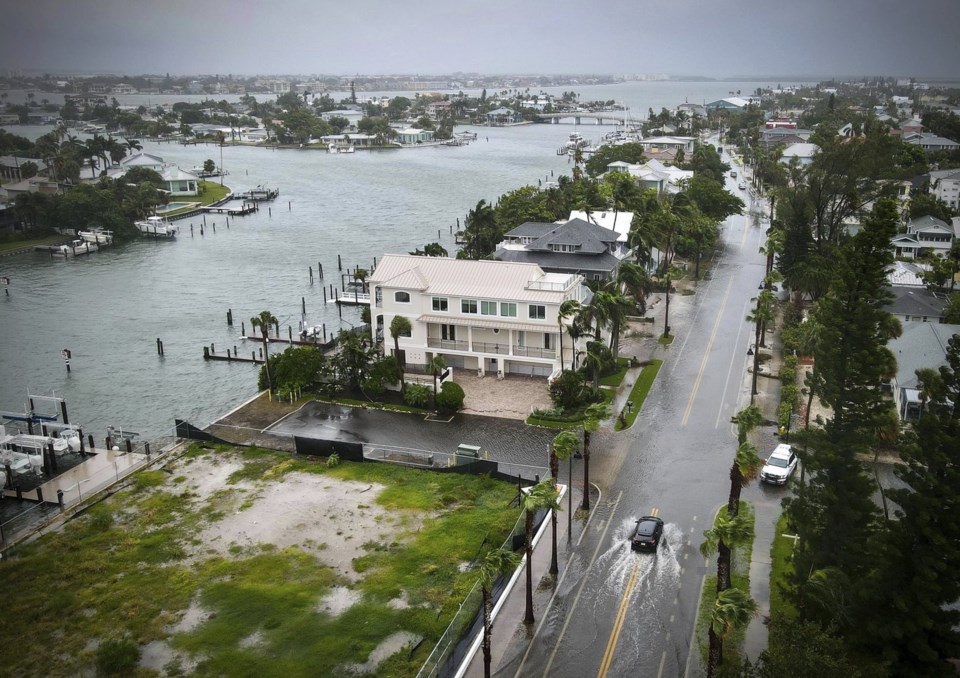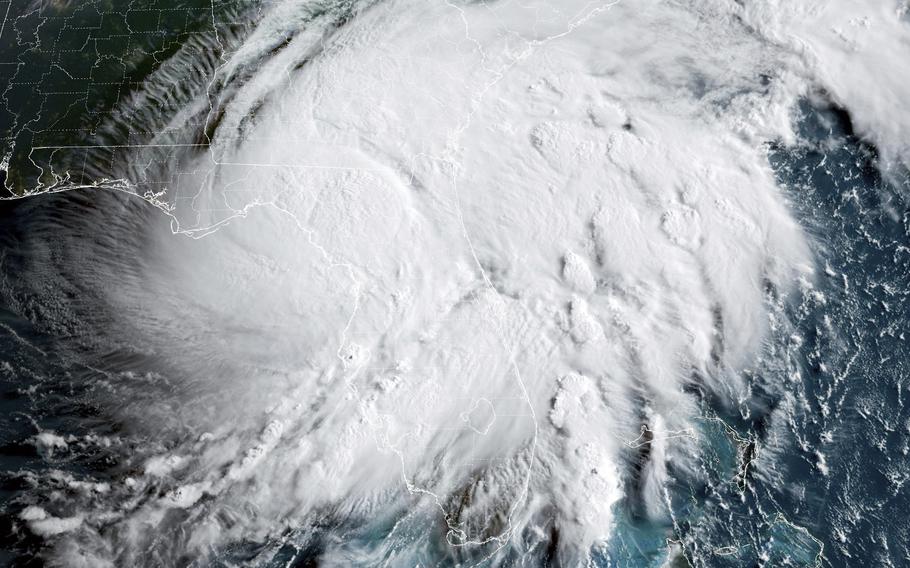Tropical Storm Debby’s Formation and Development

Tropical Storm Debby’s genesis was a testament to the dynamic interplay of atmospheric forces, culminating in a powerful weather system that left its mark on the southeastern United States. The storm’s journey from an innocuous disturbance to a formidable tropical storm provides valuable insights into the intricate workings of hurricane formation.
Meteorological Conditions Leading to Debby’s Formation
The formation of Tropical Storm Debby was intricately linked to a confluence of meteorological conditions that provided the necessary ingredients for its development. A persistent area of low pressure, located over the northwestern Caribbean Sea, served as the initial focal point for the storm’s genesis. This low-pressure system was fueled by warm, moist air from the surrounding tropical waters, creating an environment conducive to the development of thunderstorms. The presence of a weak upper-level trough, a region of low atmospheric pressure aloft, further enhanced the conditions for storm formation. The trough’s influence led to an increase in upward motion within the atmosphere, allowing the thunderstorms to organize and intensify.
Stages of Debby’s Development
Tropical Storm Debby’s development followed a typical path of intensification, progressing through several stages. It began as a tropical disturbance, characterized by disorganized thunderstorms and a weak circulation. As the disturbance moved westward, it encountered favorable conditions for development, including warm ocean waters and low wind shear. These factors allowed the thunderstorms to coalesce and strengthen, leading to the formation of a well-defined low-pressure center. With the development of a closed circulation and sustained wind speeds exceeding 39 mph, the disturbance was upgraded to Tropical Storm Debby.
Timeline of Debby’s Path and Intensification
Tropical Storm Debby’s journey was marked by a series of intensifications and shifts in direction. The storm initially formed over the northwestern Caribbean Sea on June 18, 2012. It moved slowly westward, gradually intensifying as it interacted with the warm waters of the Gulf of Mexico. On June 20, Debby made landfall near Panama City, Florida, as a tropical storm with maximum sustained winds of 50 mph. After landfall, Debby weakened slightly but continued to move inland, bringing heavy rainfall and strong winds to parts of Florida, Georgia, and Alabama. By June 22, Debby had transitioned into a tropical depression and dissipated over the southeastern United States.
Impact of Tropical Storm Debby

Tropical Storm Debby, despite being categorized as a relatively weak storm, left a significant mark on several regions, primarily due to its prolonged duration and heavy rainfall. While its wind speeds did not reach hurricane intensity, the storm’s impact was felt across various locations, causing widespread flooding, structural damage, and other disruptions.
Areas Affected and Landfall
Tropical Storm Debby made landfall in multiple locations, primarily along the southeastern coast of the United States. Its path, characterized by a slow westward movement, allowed the storm to linger over certain areas, exacerbating its effects.
- Florida: Debby made its first landfall in Florida, bringing heavy rainfall and flooding to the central and northern parts of the state. Areas like Tampa Bay and Orlando experienced significant rainfall, leading to widespread flooding and road closures.
- Georgia: Debby’s path extended into Georgia, where it brought heavy rainfall and flooding to the southern and coastal regions. The storm’s slow movement allowed for prolonged rainfall, resulting in widespread flooding in areas like Savannah and Brunswick.
- South Carolina: Debby continued its journey northward, reaching South Carolina, where it caused further flooding and damage. Areas like Charleston and Myrtle Beach experienced heavy rainfall and storm surge, leading to coastal flooding and beach erosion.
Flooding and Rainfall
One of the most significant impacts of Tropical Storm Debby was widespread flooding. The storm’s slow movement and heavy rainfall led to significant rises in river levels and widespread inundation in low-lying areas.
- Riverine Flooding: Numerous rivers across the affected regions experienced significant rises in water levels, exceeding their banks and causing extensive flooding in surrounding areas. The prolonged rainfall contributed to the swelling of rivers, leading to prolonged flooding in several communities.
- Urban Flooding: In urban areas, the storm’s heavy rainfall overwhelmed drainage systems, resulting in widespread street flooding and disruption of transportation networks. The inability of drainage systems to cope with the heavy rainfall led to significant disruptions in daily life and infrastructure.
- Coastal Flooding: Storm surge, a rise in sea level caused by the storm’s winds, combined with heavy rainfall, contributed to coastal flooding in several areas. Coastal communities experienced significant flooding, particularly in areas with low-lying terrain, leading to damage to homes and businesses.
Wind Damage and Storm Surge
While Tropical Storm Debby’s wind speeds did not reach hurricane intensity, they were still strong enough to cause significant damage in some areas.
- Wind Damage: The storm’s winds caused downed trees, power outages, and damage to roofs and structures. The wind’s strength, combined with heavy rainfall, weakened trees, making them susceptible to falling and causing damage to property.
- Storm Surge: The storm surge associated with Tropical Storm Debby caused coastal flooding and beach erosion. The rise in sea level, combined with the storm’s waves, led to significant damage to coastal infrastructure and properties.
Comparison with Other Storms
Tropical Storm Debby’s impact, while significant, was less severe than some other tropical storms and hurricanes that have affected the region in the past. However, its prolonged duration and heavy rainfall made it a notable event, causing significant disruption and damage.
- Hurricane Andrew (1992): Hurricane Andrew, a Category 5 hurricane, caused widespread devastation in South Florida, with wind speeds exceeding 160 mph. The storm’s intensity and destructive power far surpassed that of Tropical Storm Debby.
- Hurricane Katrina (2005): Hurricane Katrina, a Category 3 hurricane, caused catastrophic damage to the Gulf Coast, particularly in New Orleans. The storm’s storm surge and flooding were unprecedented, leading to massive destruction and displacement.
Response and Recovery Efforts: Tropical Storm Debby Hurricane

The impact of Tropical Storm Debby demanded a swift and coordinated response from various organizations and agencies, both at the local, state, and federal levels. Immediate relief efforts focused on addressing the immediate needs of the affected population, while long-term recovery efforts aimed to rebuild infrastructure and communities devastated by the storm.
Immediate Relief Efforts
The immediate response to Tropical Storm Debby involved a collaborative effort between various organizations and agencies. The Federal Emergency Management Agency (FEMA) played a crucial role in coordinating relief efforts and providing resources to affected areas. State and local governments, including emergency management agencies, worked tirelessly to assess damage, evacuate residents, and provide essential services.
- Search and Rescue Operations: First responders, including police, fire departments, and volunteer organizations, conducted search and rescue operations to locate and assist individuals trapped or injured by the storm. These efforts were crucial in ensuring the safety of residents and minimizing casualties.
- Emergency Shelters: The American Red Cross and other humanitarian organizations established emergency shelters for displaced residents, providing food, water, and temporary housing. These shelters offered a safe haven for those who had lost their homes or were unable to return due to damage.
- Medical Assistance: Medical professionals, including doctors, nurses, and paramedics, provided medical assistance to injured individuals and those suffering from storm-related illnesses. Hospitals and clinics mobilized their resources to address the influx of patients, ensuring access to healthcare.
- Food and Water Distribution: Organizations like the Salvation Army and local food banks distributed food and water to affected communities. These efforts ensured that residents had access to essential supplies, particularly in areas where infrastructure was damaged and supply chains disrupted.
Long-Term Recovery Efforts, Tropical storm debby hurricane
The long-term recovery process following Tropical Storm Debby was a multifaceted endeavor, requiring a sustained commitment from government agencies, non-profit organizations, and private businesses. The focus was on rebuilding infrastructure, restoring essential services, and supporting the economic recovery of affected communities.
- Infrastructure Repair: Repairing damaged infrastructure, including roads, bridges, power lines, and water systems, was a priority. Government agencies and private contractors worked diligently to restore essential services and ensure the safe and efficient functioning of transportation and communication networks. These efforts involved extensive repairs, reconstruction, and upgrades, ensuring the resilience of infrastructure to future storms.
- Community Rebuilding: The recovery process involved not only rebuilding physical infrastructure but also supporting the emotional and social well-being of affected communities. Counseling services were provided to residents coping with trauma and loss, while community organizations worked to address social needs and promote a sense of unity and resilience. These efforts aimed to restore a sense of normalcy and foster a positive environment for rebuilding lives and livelihoods.
- Economic Recovery: Supporting the economic recovery of affected communities was a key component of the long-term response. Government programs and private sector initiatives provided financial assistance, job training, and business development support to help residents and businesses recover from the storm’s economic impact. These efforts aimed to stimulate economic activity, create employment opportunities, and revitalize local economies.
Tropical storm debby hurricane – Tropical Storm Debby, man, that was a real doozy! I remember watching the news, all those folks stuck in their flooded houses, and I was thinking, “I need a comfy spot to work from if something like that ever happens.” That’s when I stumbled across this awesome tall directors chair with table , perfect for working from home during any crazy weather.
I’d be chillin’ out in my comfy chair, laptop on the table, watching the storm roll in, no sweat! Gotta be prepared, you know?
Tropical Storm Debby, man, it was a real doozy. Flooding, power outages, the whole nine yards. But you know who really stepped up to the plate? Mayor Tiffany Henyard, mayor tiffany henyard , she was right there, leading the charge, making sure everyone was safe and sound.
Debby might have thrown a curveball, but our mayor, she hit a home run!
